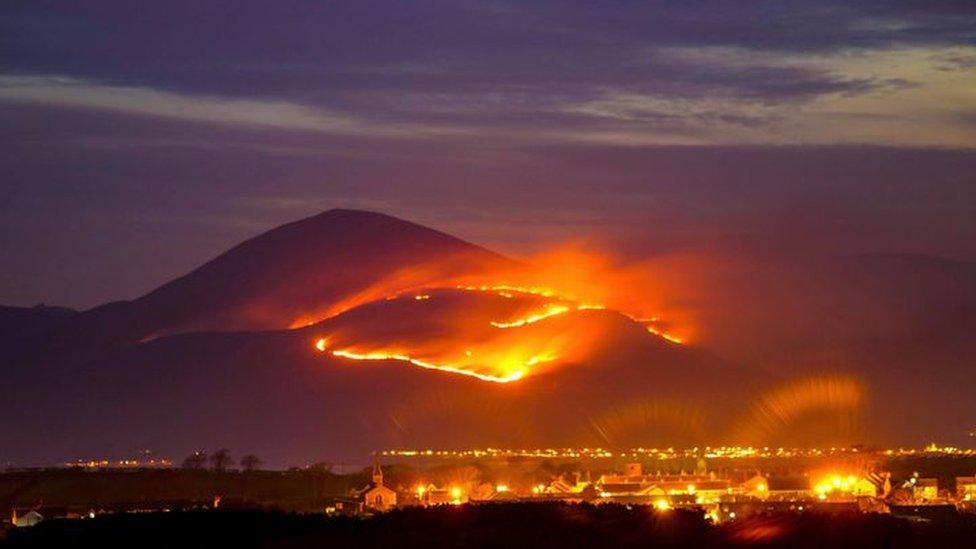Slieve Donard fire operation 'scaled down'
- Published
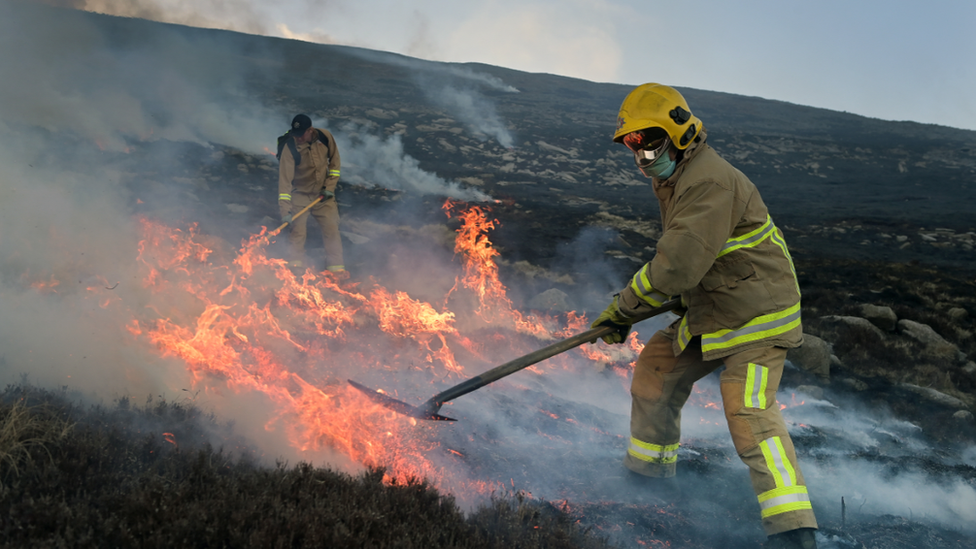
Firefighters have been working in challenging conditions on the mountainside in County Down
Significant progress has been made to control a major fire on Northern Ireland's highest mountain.
The Slieve Donard blaze has been brought under control and the operation scaled down after three days.
The gorse fire was declared a major incident on Saturday and there has been extensive damage to wildlife and the environment.
The Northern Ireland Fire and Rescue Service (NIFRS) said the fire is no longer considered a major incident.
More than 100 firefighters have been involved in the operation.
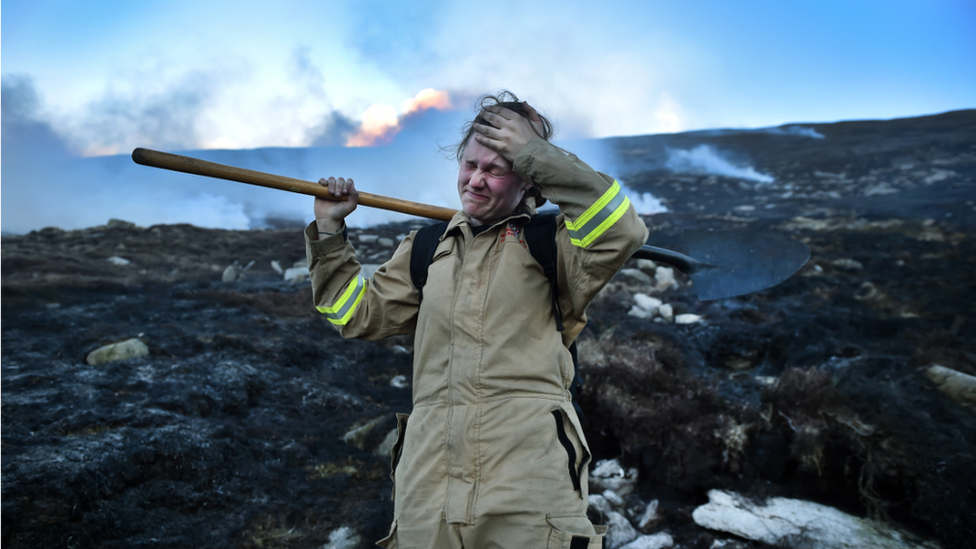
Firefighters returned to the Bloody Bridge area of the mountains at first light on Sunday.
The fire had been extinguished in the Glen River area on Saturday night but moved round the mountain overnight due to a change in wind direction, meaning efforts would be concentrated on the Bloody Bridge area on Sunday.
Earlier on Sunday, a spokeperson for The Northern Ireland Fire and Rescue Service (NIFRS) said teams of firefighters were being rotated to manage the "arduous task".
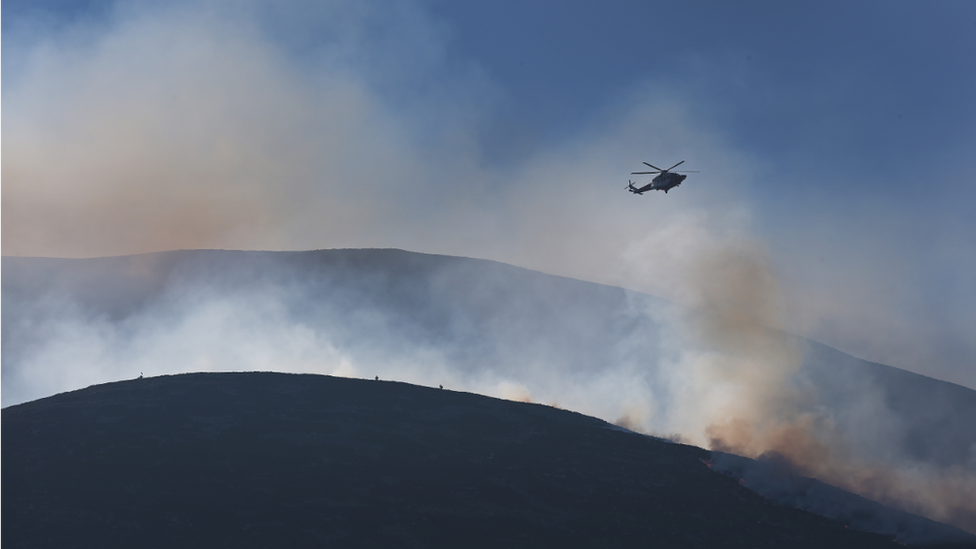
A helicopter assisting with emergency operations on Sunday morning
Assistant Chief Fire and Rescue Officer Aidan Jennings said "significant progress" had been made in containing the fire.
Allow X content?
This article contains content provided by X. We ask for your permission before anything is loaded, as they may be using cookies and other technologies. You may want to read X’s cookie policy, external and privacy policy, external before accepting. To view this content choose ‘accept and continue’.
He said the location, terrain and weather conditions continued had presented many challenges.
"Everyone has worked so hard in extremely challenging conditions, they have worked tirelessly - it is at the heart of what it means to be a firefighter," he said.

Mr Jennings said a "significant area of gorse and heather" had been affected and there had been a "significant impact on wildlife and the environment".
He said fighting the blaze had been a "huge, multi-agency project" and the use of helicopters was invaluable.
Coastguard helicopters were deployed to get an aerial view of the blaze, which spread across the lower slopes of Slieve Donard, the Glen River Valley and Thomas Mountain.
Slieve Donard: Fire crews working in 'extreme conditions'
Mr Jennings explained the aircraft were also used to transport firefighters "into remote and difficult to reach positions to tackle the fire", as conventional fire appliances were unable to reach parts of the challenging mountain terrain.
There were repeated calls for the public to stay away from the area to give firefighters space to work, including from the first and deputy first ministers.
On Saturday, NI Secretary of State Brandon Lewis asked people to heed this advice as "deeply distressing scenes" unfolded in the area of outstanding natural beauty.
Mr Lewis paid tribute to the "heroic work" of the emergency services and said the impact of the fire on one of Northern Ireland's most beautiful landmarks was "tragic".
Allow X content?
This article contains content provided by X. We ask for your permission before anything is loaded, as they may be using cookies and other technologies. You may want to read X’s cookie policy, external and privacy policy, external before accepting. To view this content choose ‘accept and continue’.
Mr Jennings said the public had responded well to these appeals.
Related topics
- Published24 April 2021
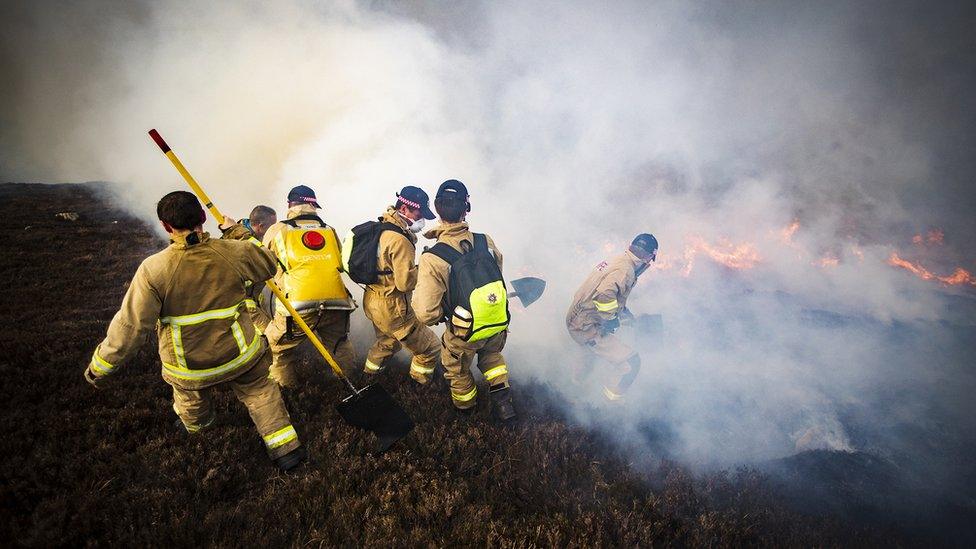
- Published24 April 2021
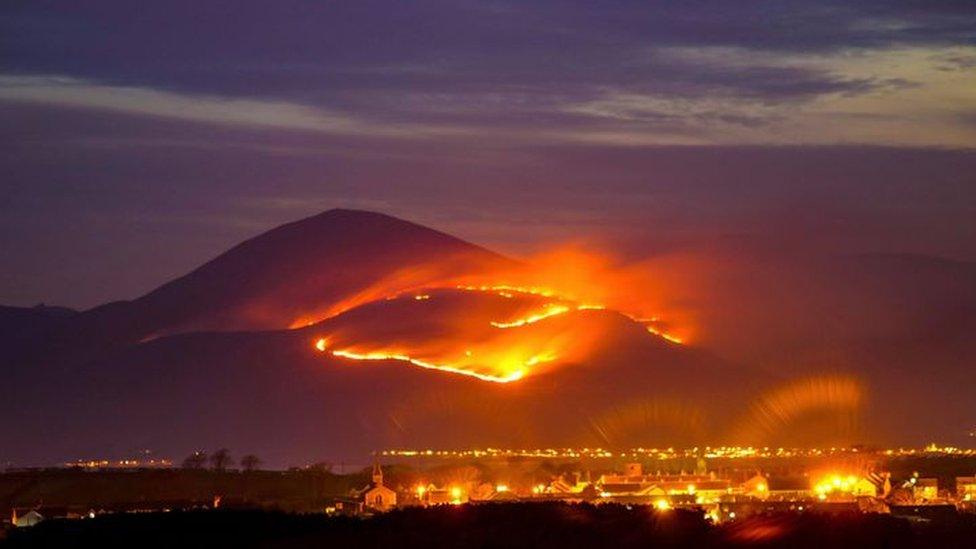
- Published23 April 2021
